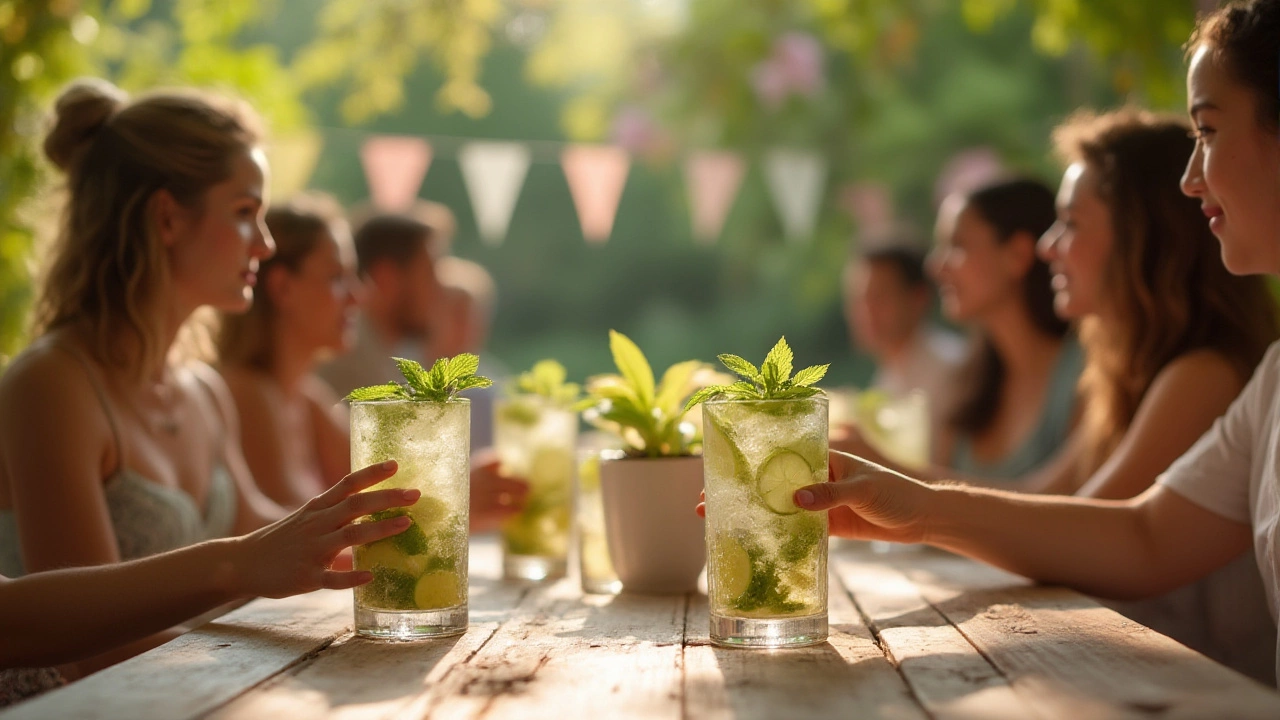Food & Drink Essentials for Wine Geeks
If you love wine, you probably love the whole experience – the food, the drinks, the stories behind each bottle. This page pulls together the most useful tips, tasty recipes, and handy etiquette tricks you need to enjoy every sip and bite. Whether you’re planning a casual night in or a fancy tasting, the advice below will help you get it right without over‑thinking.
Top Cocktails and Mocktails You’ll Want to Try
Everyone has that go‑to cocktail that gets the party started. The classics – margarita, old fashioned, gin & tonic – stay popular because they’re easy to make and taste great. If you need a fresh spin, try a simple twist: swap the usual lime for a splash of blood orange juice or add a dash of bitters to a mojito. For those who skip the alcohol, the virgin mojito reigns supreme. Its mint‑y fizz and lime bite feel just as festive, and you only need fresh mint, lime, sugar, soda water, and ice.
When you’re looking for a crowd‑pleaser, keep the ingredient list short. Most people already have gin, rum, or vodka at home, so a few citrus wedges, a spoonful of simple syrup, and some fresh herbs are enough to create a drink that feels special. Pair a tropical rum punch with light appetizers, or serve a crisp gin fizz alongside salty olives for a balanced bite‑and‑sip experience.
How to Pair Wine, Cheese, and Food Like a Pro
One of the biggest debates in the tasting world is whether to try the cheese or the wine first. The simple rule that works for most people is to start with the wine. Let the liquid awaken your palate, then introduce the cheese to see how the flavors interact. Light whites go well with soft cheeses like brie, while bold reds can stand up to sharp cheddars or aged gouda.
Don’t forget the little details that make a pairing shine. A splash of sparkling water between tastings can reset your taste buds, and a small piece of dark chocolate can cleanse the palate before moving on to a richer wine. If you’re hosting a tasting, avoid strong perfumes and heavy coffee right before the session – both can mute the subtle notes you’re trying to detect.
For a quick, no‑fuss pairing, match the intensity of the food with the body of the wine. Light salads and seafood love a crisp, acidic white like Sauvignon Blanc. Hearty stews and grilled meats need a full‑bodied red such as Cabernet Sauvignon or a robust Malbec. This rule-of-thumb keeps you from over‑complicating things while still delivering a satisfying match.
Beyond wine, other spirit tastings have their own etiquette. When you’re at a whiskey tasting, you’ll often hear people spit rather than swallow. Spitting lets you sample more without overwhelming your palate, and it’s perfectly acceptable in most tasting rooms. If you’re new to whiskey, start with a small sip, note the aroma, then decide if you want the full flavor or just the experience.
Finally, keep health in mind. Spirits like gin can be harsh on gut health if you overindulge, especially when paired with rich, fatty foods. Moderation and balanced meals help you enjoy the buzz without the after‑effects.
All these tips are about making your food and drink moments more enjoyable. Pick a cocktail, choose a cheese, or line up a whiskey flight – then follow the simple guidance above and you’ll feel confident, whether you’re a seasoned sommelier or just starting out. Cheers to tasty experiments and unforgettable sips!
Explore the world’s favorite cocktails, discover why some drinks are so loved, learn proven recipes, and grab tips for making the perfect cocktail everyone enjoys.
View DetailsEver wondered if cheese or wine should be tasted first? Unpack the right tasting order, food pairing science, and pro tips for an unforgettable experience.
View DetailsCurious about the most popular non-alcoholic cocktail? Discover why the virgin mojito is the king of mocktails, get tips, recipes, and interesting facts.
View DetailsCurious if you should spit out whiskey at a tasting? Discover whiskey tasting etiquette, expert tips, and why spitting is more common than you might think.
View DetailsThinking about heading to a wine tasting? What you do before you sip matters more than you think. This deep-dive article uncovers surprising things to avoid before wine tasting so you get the best experience possible. From skipping perfume to rethinking your coffee, you'll find practical, real-world advice for both beginners and seasoned tasters. Brush up on wine customs and learn how simple pre-tasting slip-ups can change your palate. Don’t miss these smart tips to taste wine like a pro.
View DetailsDiving into the relationship between alcohol and gut health, this article explores which types of spirits could potentially be more harmful. Special attention is given to gin due to its popularity in distillery tours. We'll touch on the effects of different alcohols on gut health and provide some practical advice for those enjoying spirits. Stay informed about what you pour in your glass and its effects on your digestive health.
View Details






